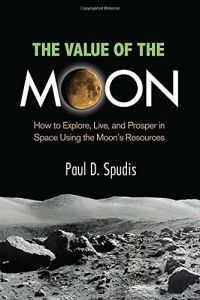Join getAbstract to access the summary!

Join getAbstract to access the summary!
Paul D. Spudis
The Value of the Moon
How to Explore, Live, and Prosper in Space Using the Moon's Resources
Smithsonian Books, 2016
What's inside?
We’ve been to the moon. Where should we go next? The moon.
Recommendation
Lunar scientist Paul Spudis provides a firsthand guide through the history of the US space program as part of his argument that the US should colonize the moon as the next step in its space exploration. After Neil Armstrong’s walk on the moon, the next steps were the space shuttle program, robotic explorations and new satellites – including NASA’s recent success at placing a probe into orbit around Jupiter. Many observers ask, if you care about space, what’s next? Spudis makes a clear, methodical case for returning to the moon as the best next step for exploring near-Earth space and the other planets. He weakens his case by repeating his main points, though that springs from his passion for the topic. getAbstract recommends his argument to investors, policy makers, entrepreneurs, inventors, students and anyone curious about the value of space.
Summary
About the Author
Lunar scientist Paul D. Spudis has published more than 100 scientific papers and won numerous awards, including the NASA Distinguished Public Service Medal.
















Comment on this summary